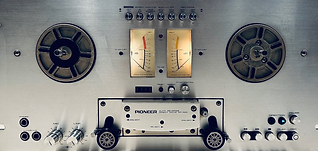Brief History

Pioneer, a prominent Japanese electronics manufacturer, produced reel-to-reel tape decks from 1971 until 1984, targeting both the consumer and semi-professional markets. The company is known for its commitment to quality and innovation in audio technology.
Early Development
-
1971: Pioneer entered the reel-to-reel market with the RT-707, which quickly gained popularity for its robust construction and user-friendly features. This model was designed for 7-inch reels and included an autoreverse function, making it versatile for home recording.
-
1976: The introduction of the RT-2044 marked a step up in performance, featuring a four-track capability that appealed to more serious audio enthusiasts. This model was well-regarded for its sound quality and reliability.


Advancements and Popular Models
-
1979: The RT-909 was launched as a high-end model, known for its rack-mountable design and excellent specifications. It featured a unique display and was built to meet professional standards, making it a favorite among audiophiles.
-
Throughout the late 1970s and early 1980s, Pioneer continued to innovate with models like the RT-2022, which catered to semi-professional users seeking high-quality recording capabilities.
Market Challenges
Despite its success, Pioneer faced increasing competition from cassette tape technology, which became more popular due to its convenience and lower cost. By the early 1980s, the demand for reel-to-reel tape decks began to decline as digital recording technologies emerged.
Legacy
Pioneer ceased production of reel-to-reel tape decks in 1984, marking the end of an era for the company in this segment. However, many of their vintage models remain highly sought after by collectors and audiophiles today. Pioneer's reel-to-reel decks are remembered for their solid build quality, innovative features, and significant contributions to home audio recording during a transformative period in music technology.













